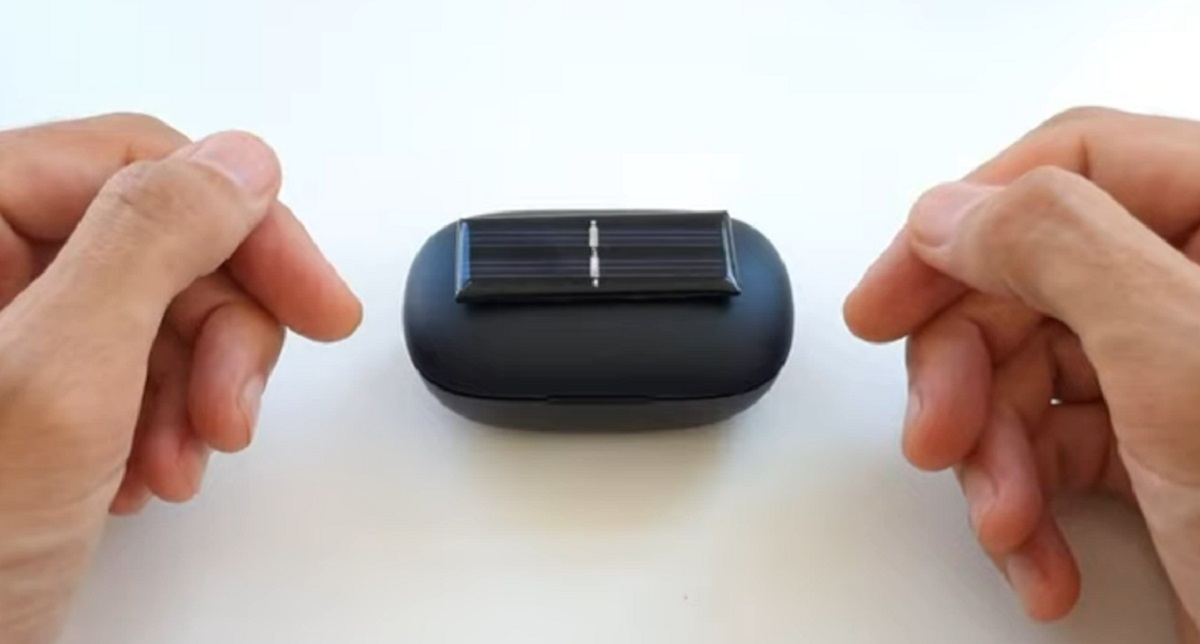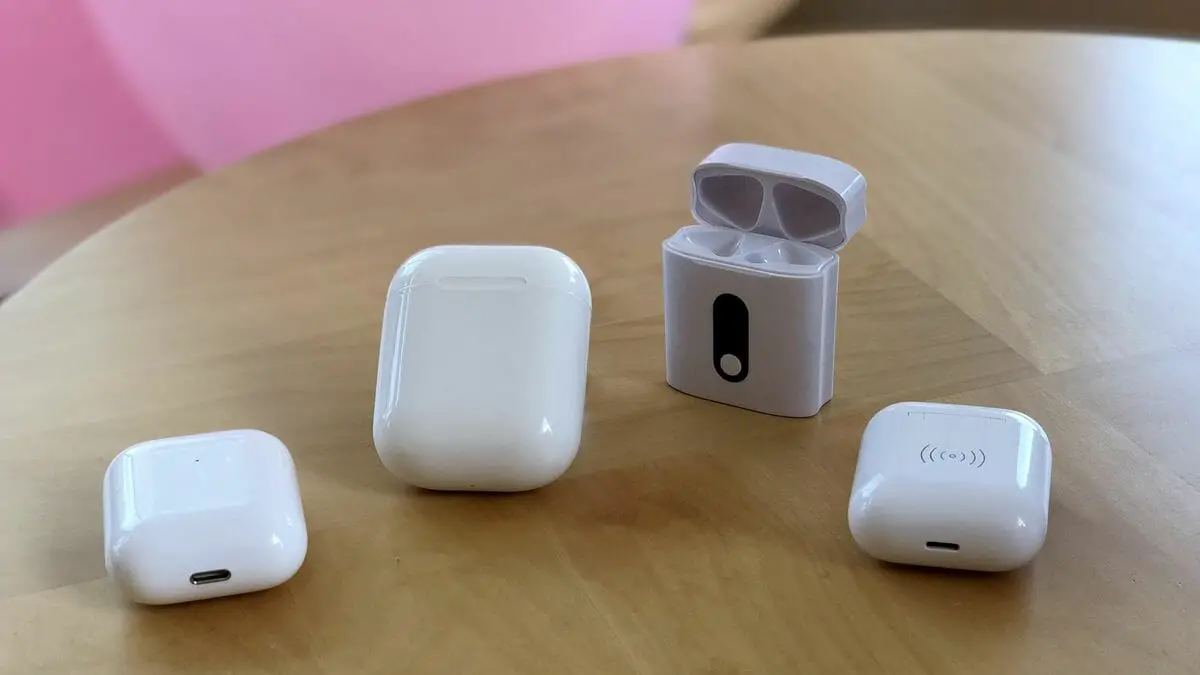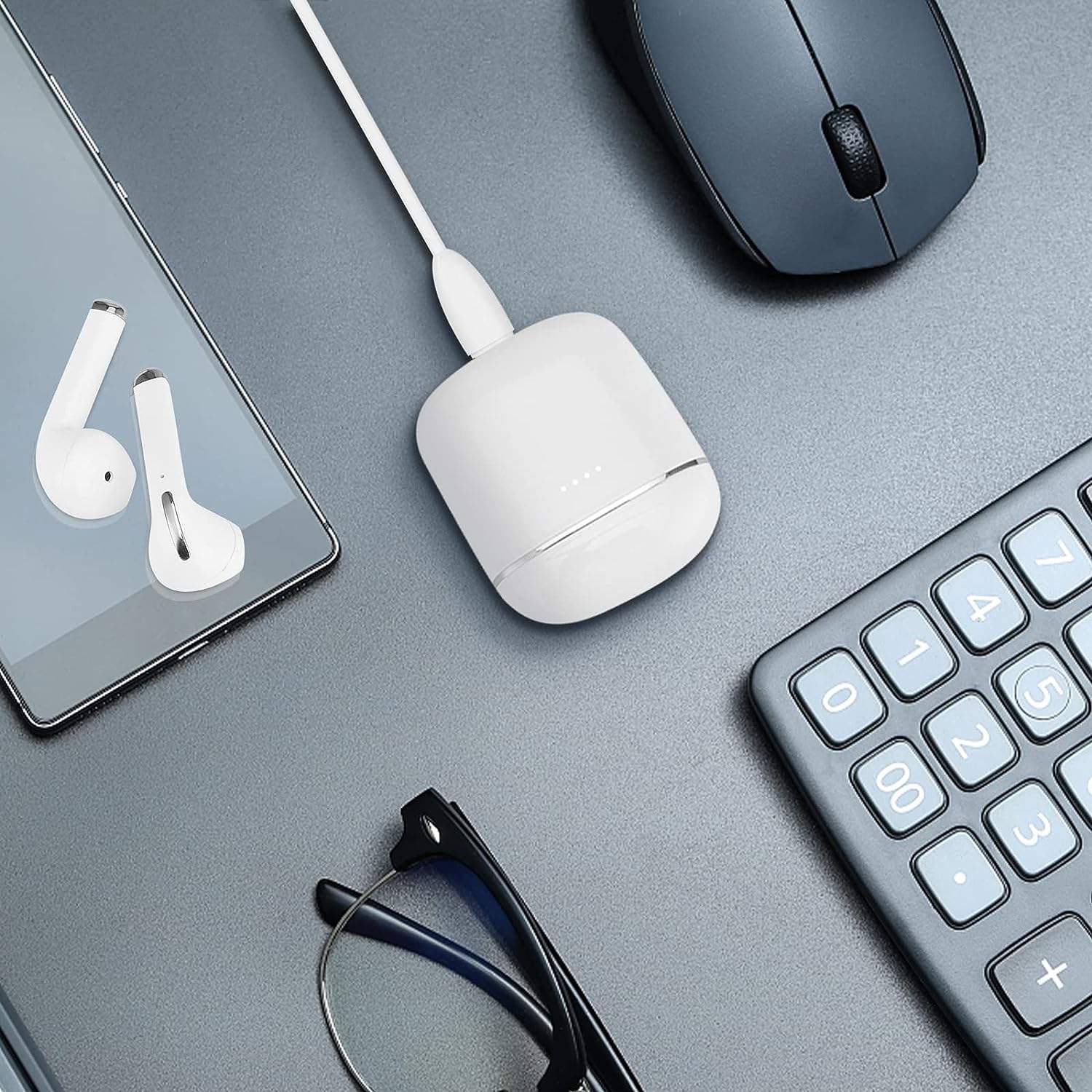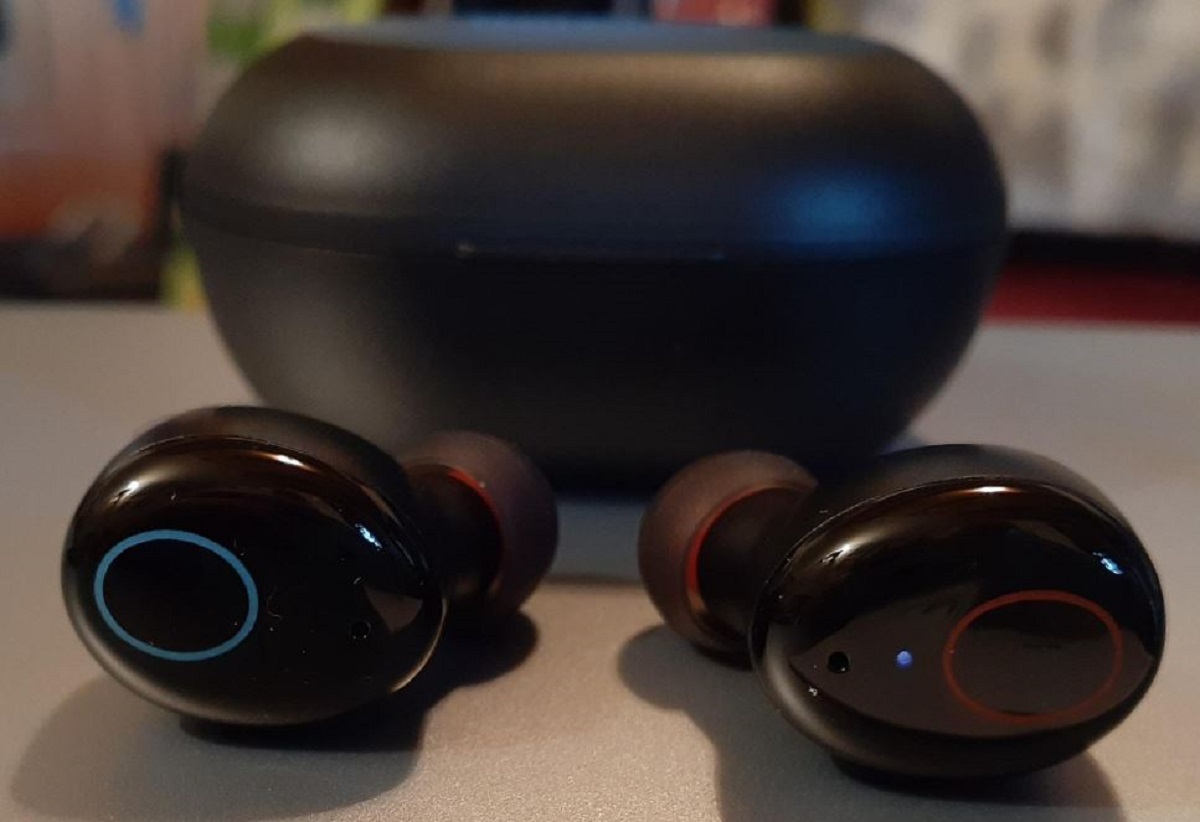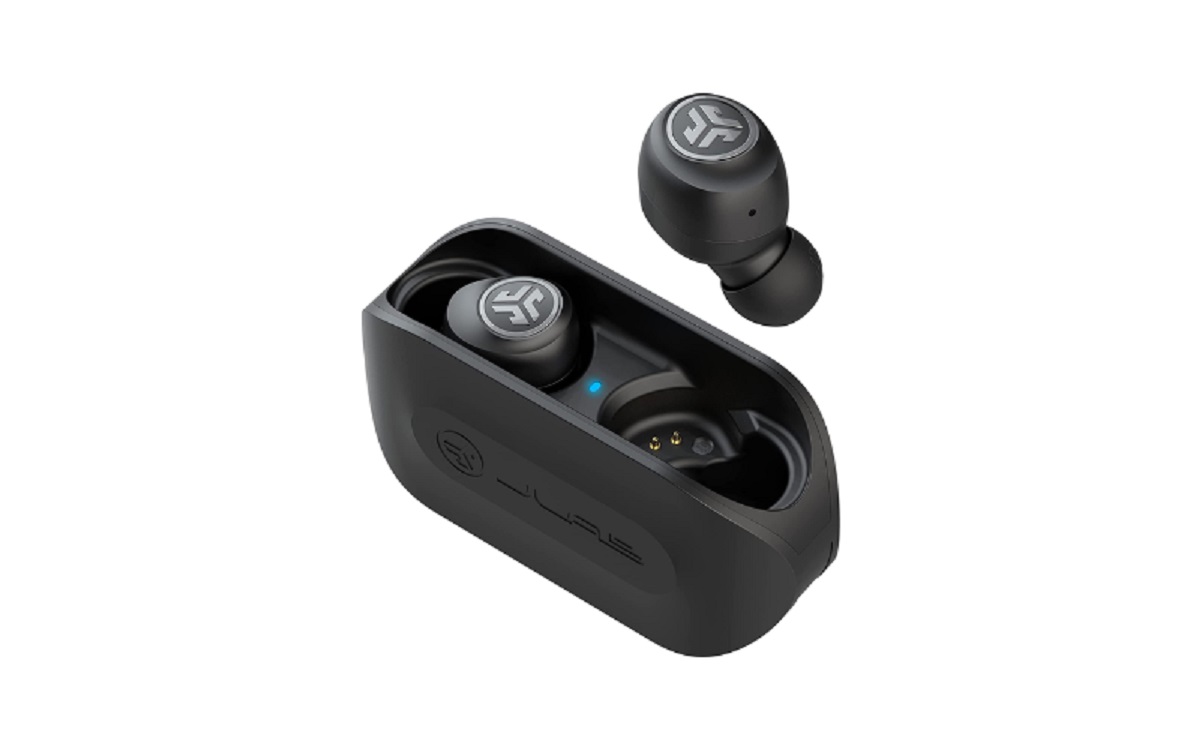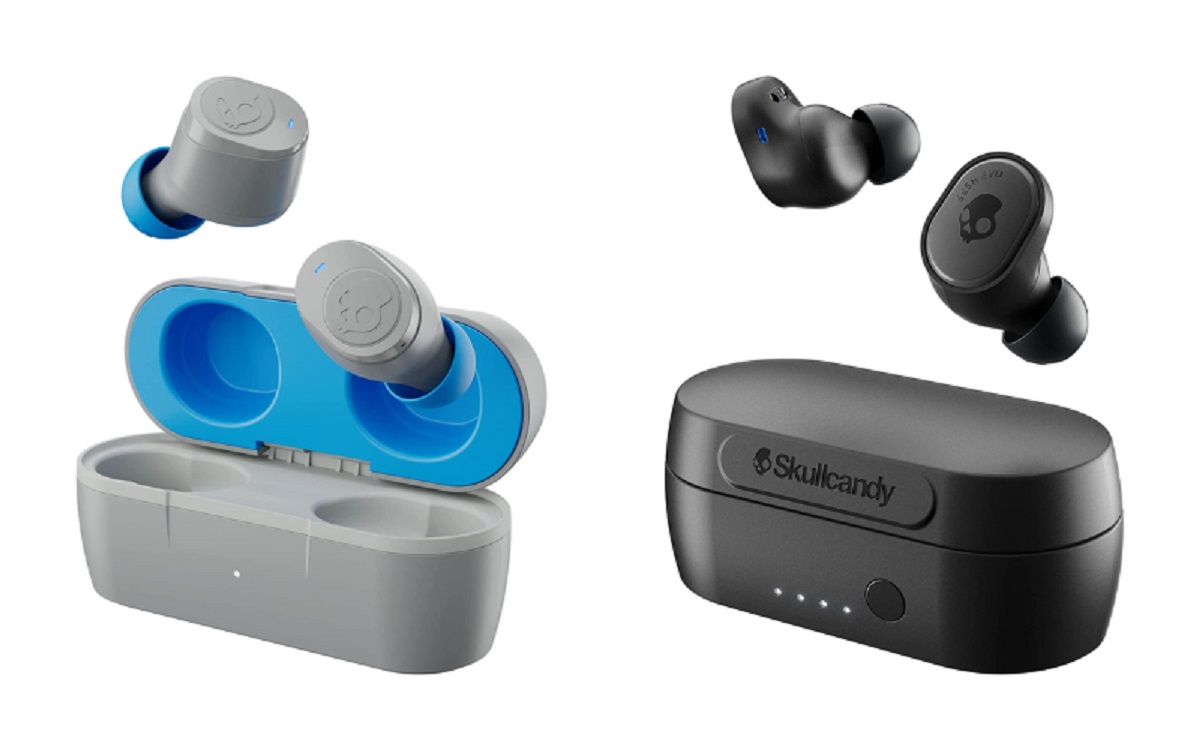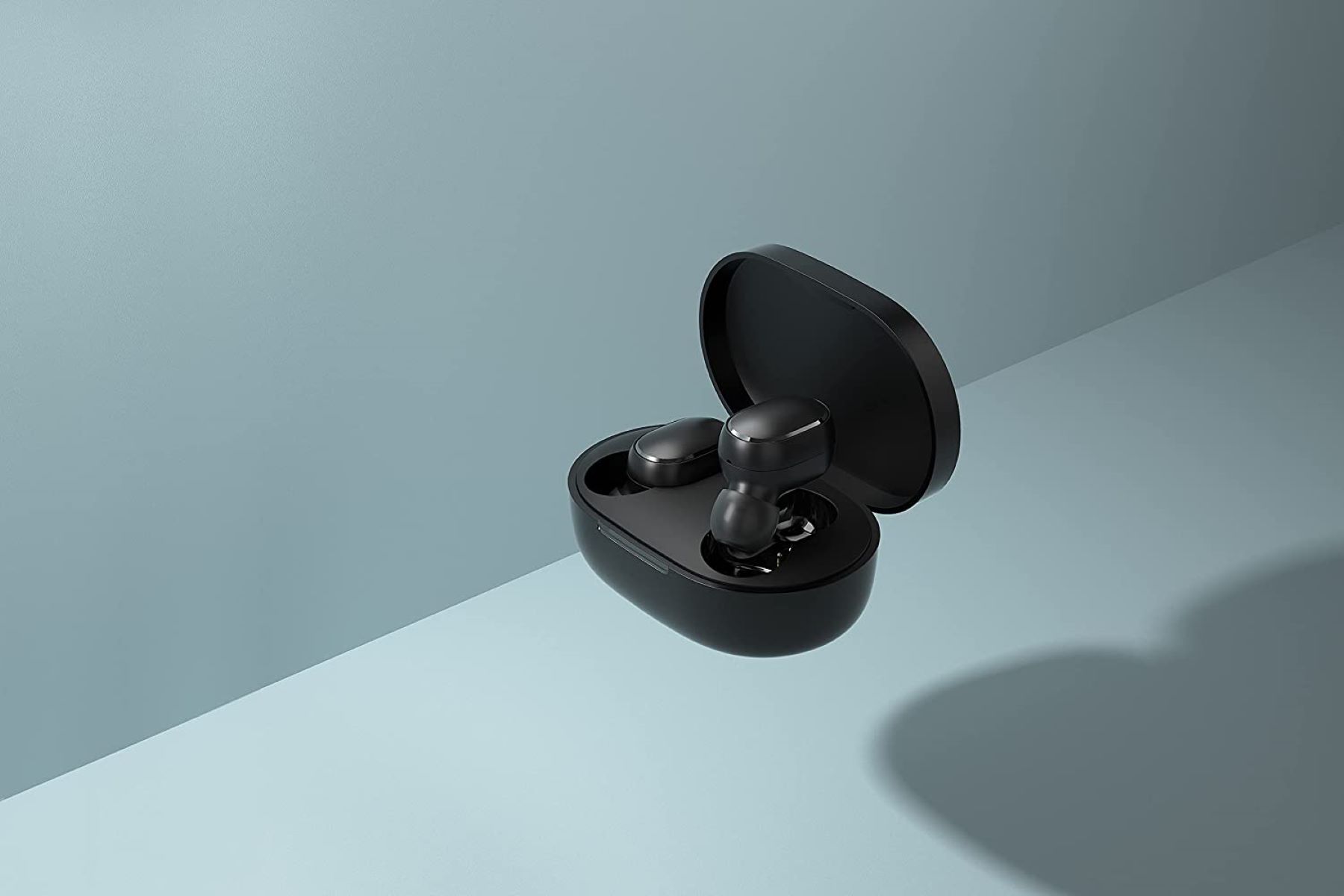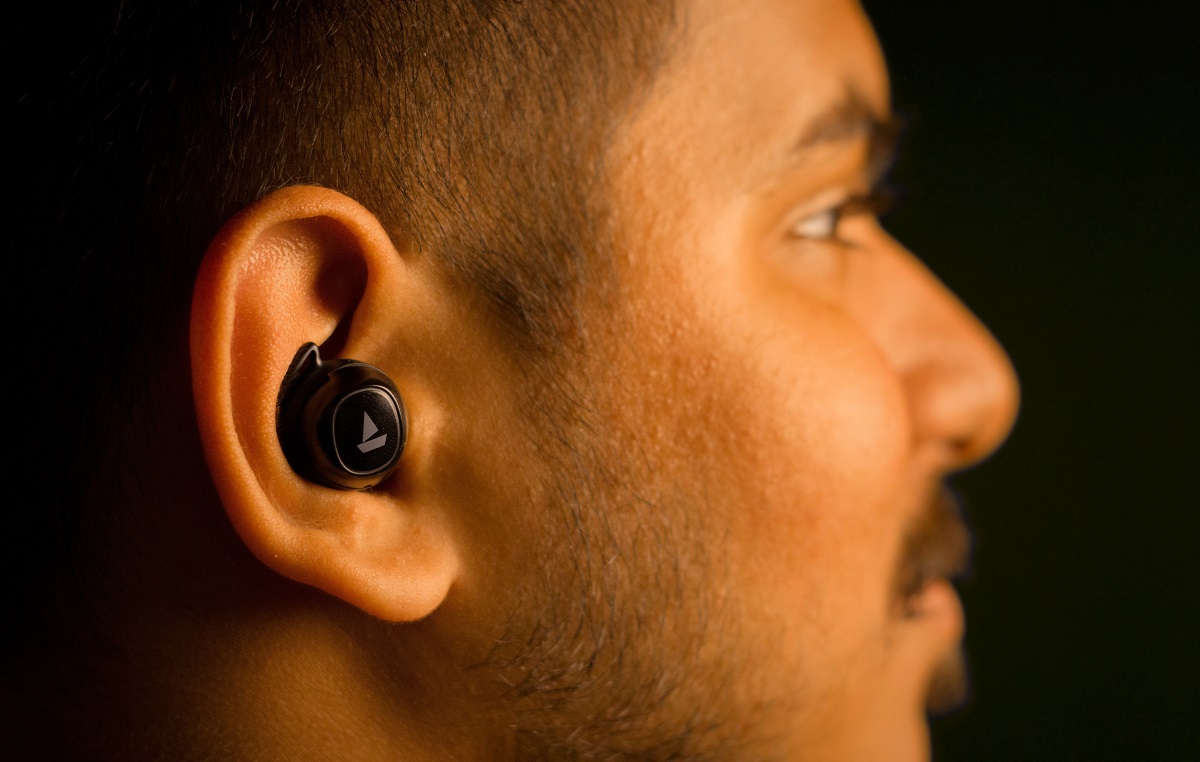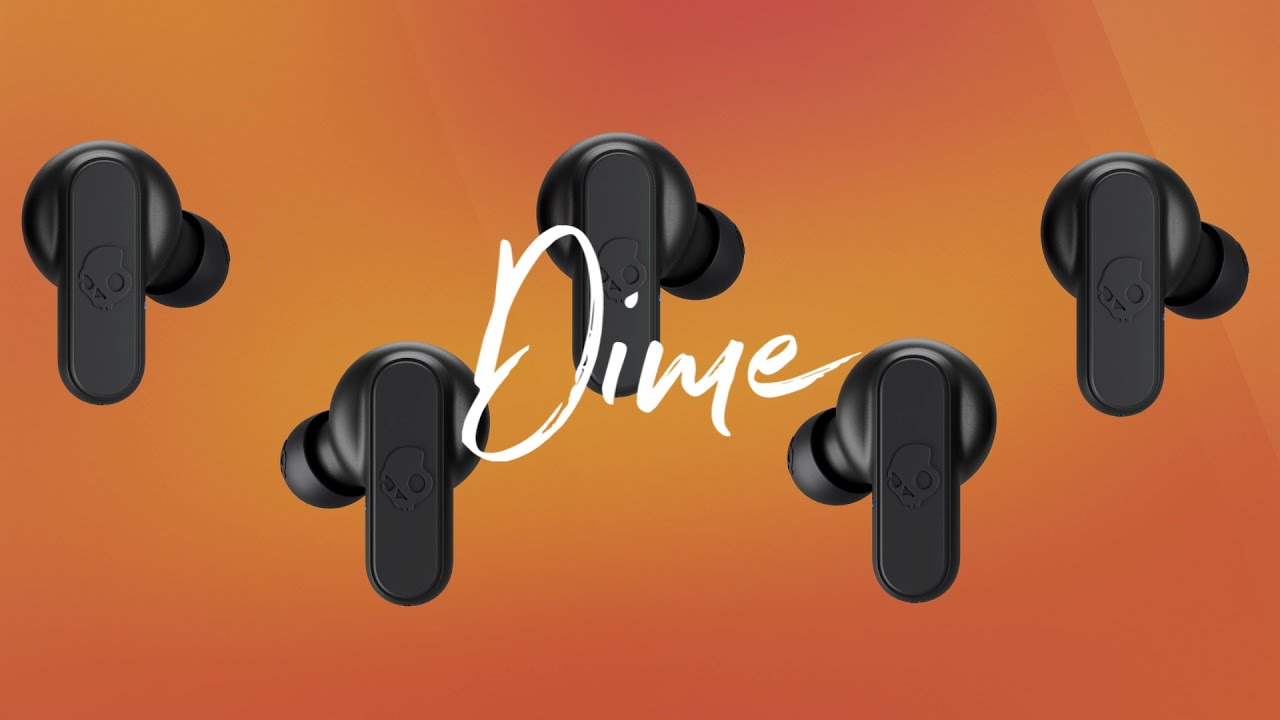Introduction
Welcome to the world of wireless earbuds, where convenience and freedom from tangled wires have become a reality. These nifty little gadgets have revolutionized the way we listen to music, take calls, and enjoy audio content on the go. But have you ever wondered how these wireless earbuds charge?
Wireless earbuds, also known as true wireless earbuds, have gained immense popularity in recent years due to their compact design and seamless connectivity. Unlike traditional wired earphones, they connect to your devices via Bluetooth, allowing for a wire-free audio experience.
With wireless earbuds, charging becomes a crucial aspect of their functionality. After all, you want them to be juiced up and ready to use whenever you need them. In this article, we’ll delve into the world of wireless earbud charging, exploring the different technologies and methods used to keep these tiny powerhouses up and running.
Wireless earbuds consist of two separate earpieces, each housing a battery, Bluetooth chip, and speaker. The earbuds are stored in a charging case, which not only serves as a protective case but also offers a convenient charging solution for your earbuds.
The charging case itself has a built-in battery, which is used to recharge the earbuds when they are placed inside. This means that in addition to charging the earbuds, you can also charge the case itself to ensure you have multiple charges available while on the go.
Now that you have a basic understanding of how wireless earbuds work, let’s dive deeper into the different methods and technologies used for charging these handy devices. Whether you prefer USB charging, wireless charging, or fast charging, we’ll explore the pros and cons of each method, as well as some tips on how to extend the battery life of your wireless earbuds.
How Do Wireless Earbuds Work
Wireless earbuds may seem like a magical invention, but in reality, they operate on a simple yet sophisticated system. Inside each earbud, you will find a combination of electronics, a battery, and a Bluetooth chip, all working in harmony to deliver high-quality audio without the need for wires.
When you put on wireless earbuds and pair them with your device, they establish a wireless connection via Bluetooth. This technology uses short-range radio waves to transmit audio signals from your device to the earbuds. The Bluetooth chip in the earbuds receives the audio signal and converts it into sound waves that you can hear.
One of the key elements of wireless earbuds is the battery. The battery powers the Bluetooth chip, speakers, and any additional features in the earbuds. The battery life varies depending on the model and brand, but most wireless earbuds offer several hours of continuous playback.
To ensure uninterrupted usage, many wireless earbuds come with a portable charging case. When the earbuds are not in use, you can place them back into the case. The case itself has a built-in battery, allowing it to charge the earbuds while they are stored. This way, you can extend the battery life of your earbuds, making them more convenient for daily use.
In terms of connectivity, wireless earbuds use Bluetooth technology to connect to your device. The earbuds and your device must be within a certain range for the Bluetooth connection to work effectively. The range can vary depending on the device and any potential obstructions, such as walls or other electronic devices.
Another important aspect to consider is the audio quality of wireless earbuds. While early models faced critiques for subpar audio performance, modern wireless earbuds have made significant advancements in sound quality. Many models offer excellent audio clarity and immersive sound experiences, thanks to improved speaker technology and audio codecs.
Overall, wireless earbuds are a fantastic innovation that combines convenience, portability, and exceptional audio quality. Understanding how they work can help you make informed decisions when choosing the right pair for your needs. Whether you’re using them for workouts, commuting, or simply enjoying your favorite tunes, wireless earbuds offer a hassle-free listening experience that keeps you in the groove.
Battery Capacity and Charging Case
The battery capacity of wireless earbuds plays a crucial role in determining how long you can use them before needing to recharge. The battery capacity is measured in milliampere-hours (mAh) and varies between different models and brands.
On average, wireless earbuds have a battery capacity ranging from 50mAh to 100mAh per earbud. This capacity may not sound impressive when compared to the batteries in smartphones or tablets, but considering their small size, it’s quite remarkable. These small batteries can power the earbuds for several hours, allowing you to enjoy music, podcasts, or take calls on the go.
To ensure that your wireless earbuds remain functional when you need them, most models come with a charging case. The charging case serves a dual purpose – it provides a safe storage solution for your earbuds and serves as a portable charging station.
The charging case houses a larger battery, typically ranging from 300mAh to 1000mAh, depending on the model. This battery allows you to charge your earbuds multiple times when you’re away from a power source. Simply place the earbuds back into the case, and they will start charging automatically.
The charging case usually has an LED indicator to show the remaining battery level. This feature lets you know when it’s time to recharge the case itself, ensuring that you always have a sufficient power supply for your earbuds.
When it comes to recharging the charging case, most models use a USB charging cable. This allows you to connect the case to a power source, such as a laptop or wall adapter, and recharge the battery inside. The charging time for the case can vary, but it typically takes a few hours to fully charge.
Some higher-end wireless earbuds support wireless charging for both the earbuds and the charging case. If you have a compatible wireless charging pad, you can simply place the case on the pad and let it charge wirelessly, removing the need for cables altogether.
Overall, the combination of the battery capacity in the earbuds and the charging case ensures that you can enjoy your wireless earbuds for extended periods without worrying about running out of power. The convenience of the charging case makes it easy to keep your earbuds charged and ready to use, whether you’re at home, at work, or on the go.
Charging Methods
Wireless earbuds offer various methods for charging, allowing you to choose the one that suits your preferences and lifestyle. Here, we will explore the three main charging methods commonly used for wireless earbuds: USB charging, wireless charging, and fast charging.
USB Charging: USB charging is the most common and widely supported method for charging wireless earbuds. This method involves connecting the charging case to a power source using a USB cable. The USB cable is usually provided with the earbuds and can be plugged into a computer, a wall adapter, or a power bank. USB charging is convenient and ensures a reliable and efficient charging experience.
Wireless Charging: Wireless charging is a popular feature found in some wireless earbuds and their charging cases. It allows you to charge your earbuds and the case without the need for any cables. Wireless charging relies on electromagnetic induction to transfer power from a charging pad or mat to the charging case. To use wireless charging, simply place the charging case on the wireless charging pad, and the power will transfer wirelessly. It’s a convenient and clutter-free method, especially if you have multiple devices that support wireless charging.
Fast Charging: Fast charging is a technology that enables you to quickly charge your wireless earbuds. This feature is particularly useful when you’re low on battery and in a hurry. With fast charging, a few minutes of charging can provide hours of playback time. The charging case and the earbuds need to support fast charging for this feature to work effectively. However, it’s important to note that fast charging may generate more heat and put slightly more strain on the battery, so it’s not recommended for regular everyday charging to maintain the longevity of the battery.
These charging methods offer flexibility and convenience to ensure that your wireless earbuds are always ready for use. Whether you prefer the simplicity of USB charging, the wireless freedom of wireless charging, or the quick boost of fast charging, there’s a charging method that will suit your needs and preferences.
USB Charging
USB charging is the most common and widely used method for charging wireless earbuds. It provides a simple and convenient way to power up your earbuds and charging case. USB charging typically involves connecting the charging case to a power source using a USB cable.
When you purchase wireless earbuds, they usually come with a USB charging cable. This cable has a USB-A connector on one end, which plugs into a power source such as a computer, a wall adapter, or a power bank. The other end of the cable usually has a micro-USB or USB Type-C connector, which plugs into the charging case.
The USB charging cable transfers electrical power from the power source to the charging case, allowing the battery inside the case to recharge. This process usually takes a few hours, depending on the battery capacity of the case and the charging speed.
USB charging offers several advantages for wireless earbuds users. First, it is a universal charging method that is compatible with a wide range of devices and power sources. You can easily find USB ports on computers, wall adapters, and power banks, allowing you to charge your earbuds wherever you are.
Furthermore, USB charging provides a reliable and stable charging experience. The USB cable securely connects the charging case to the power source, ensuring a consistent flow of electricity for efficient charging. You can have peace of mind knowing that your wireless earbuds are charging safely and effectively.
Additionally, USB charging is a cost-effective solution. Since most wireless earbuds come with a USB charging cable, there is no need to purchase any additional accessories to charge your earbuds. The USB cable can be used for other devices as well, making it a versatile charging option.
One potential drawback of USB charging is the need for a physical connection between the charging case and the power source. This means that you will have a cable running from the charging case to the power source, which can create some clutter and limit your mobility to a certain extent.
Overall, USB charging is a reliable, universal, and cost-effective method for charging wireless earbuds. It offers convenience and ensures that your earbuds are ready to use whenever you need them. Whether you’re at home, in the office, or on the go, USB charging provides a straightforward and efficient solution for keeping your wireless earbuds powered up.
Wireless Charging
Wireless charging is a convenient and hassle-free method for charging wireless earbuds. It offers a cable-free solution and eliminates the need for constantly plugging and unplugging your charging case. With wireless charging, you can simply place the charging case on a compatible charging pad, and the power will transfer wirelessly to charge your earbuds.
Wireless charging technology relies on electromagnetic induction to transfer power from the charging pad to the charging case. The charging pad contains a coil that generates an alternating magnetic field when connected to a power source. The charging case also has a coil that can receive the alternating magnetic field and convert it into electrical energy to charge the battery inside. This wireless transfer of power happens through electromagnetic waves, making it a convenient and efficient charging method.
To use wireless charging for your wireless earbuds, you need a charging pad or mat that supports the Qi wireless charging standard. Qi is the most widely adopted wireless charging standard and is compatible with various devices, including many wireless earbuds and smartphones.
When you have a compatible charging pad, simply place the charging case on the pad, aligning the coils on the case and the pad. The pad will detect the presence of the case and initiate the charging process. Some charging pads have LED indicators to show that the charging is in progress.
Wireless charging offers several advantages for wireless earbuds users. First and foremost, it eliminates the need for cables, reducing clutter and simplifying the charging process. You can simply place the charging case on the charging pad and walk away, knowing that your earbuds are charging. This is especially convenient if you have multiple devices that support wireless charging, as you can use the same charging pad for all of them.
Furthermore, wireless charging is a more durable charging method compared to using a charging cable. With no physical connection or constant plugging and unplugging, there is less wear and tear on the charging port of the case. This can help prolong the lifespan of your earbuds and ensure long-term reliability.
It’s important to note that wireless charging may not be as fast as using a USB cable. The charging speed can vary depending on the charging pad and the power output it provides. However, the convenience and ease of wireless charging outweigh the relatively slower charging speed for many users.
Overall, wireless charging provides a seamless and cable-free solution for charging your wireless earbuds. It simplifies the charging process, reduces clutter, and offers added durability. If you prioritize convenience and a wire-free experience, wireless charging is a fantastic option to keep your earbuds powered up.
Fast Charging
Fast charging is a feature that allows you to quickly charge your wireless earbuds, providing a convenient solution for those times when you need a quick boost of battery power. This technology enables you to get several hours of playback time with just a few minutes of charging.
Fast charging is dependent on the capabilities of both the earbuds and the charging case. To support fast charging, the earbuds and the case need to have compatible technology and components. Some earbuds and charging cases are specifically designed to support fast charging, providing the necessary hardware and software optimizations.
When you have fast-charging-enabled wireless earbuds, you can usually achieve a significant amount of playback time with just a few minutes of charging. For example, a 10-minute charge can give you one to two hours of playback time, depending on the specific model and brand.
The fast charging process is designed to optimize the flow of electrical current to the battery, allowing it to charge at a higher rate than regular charging. This acceleration in charging speed is beneficial when you’re in a hurry and need to quickly recharge your earbuds.
However, it’s important to note that fast charging may generate more heat compared to regular charging. The increased electrical current can lead to a temperature rise, which is why it is not recommended for regular everyday charging. Using fast charging sparingly can help extend the overall battery life and maintain its longevity.
Manufacturers often provide guidelines and recommendations for using fast charging effectively. Following these instructions can help ensure that you maximize the benefits of fast charging without compromising the safety or longevity of your wireless earbuds.
Fast charging technology has become increasingly common in wireless earbuds, providing a valuable feature for users who are always on the go. It offers a quick and convenient solution when you’re low on battery and don’t have much time to spare.
However, it’s worth noting that not all wireless earbuds support fast charging. Before purchasing a pair of earbuds, make sure to check whether they have fast charging capabilities if this is an important feature for you.
In summary, fast charging is a technology that allows for quick charging of wireless earbuds. It provides a time-saving and convenient solution, ensuring that you can enjoy your earbuds for longer periods by charging them quickly. Just remember to use fast charging sparingly to maintain the overall health and lifespan of the battery.
Charging Time
Charging time is an essential consideration when it comes to wireless earbuds. Knowing how long it takes to fully charge your earbuds and the charging case can help you plan your usage and ensure that you always have a reliable power source available.
The charging time for wireless earbuds can vary depending on several factors, including the battery capacity, the charging method, and the charging speed supported by the earbuds and the case. Generally, it can take anywhere from 1 to 3 hours to fully charge both the earbuds and the charging case.
It’s important to note that the charging time can also vary depending on the power output of the charging source. For example, if you’re using a USB port with a lower power output, it may take longer to charge your earbuds compared to using a higher-output USB wall adapter.
Fast charging technology has improved the overall charging time for wireless earbuds. With fast charging, you can get a decent amount of playback time with just a few minutes of charging. However, it’s essential to follow the manufacturer’s guidelines regarding the duration and frequency of fast charging to prevent any adverse effects on the battery life.
Another factor that can affect the charging time is the battery level of the earbuds and the case when you start charging. If they are completely drained, it may take slightly longer to charge them back to full capacity. On the other hand, if there is still some charge remaining, the charging time may be shorter.
To ensure optimal charging time, it is recommended to use the original charging cable and power source provided by the manufacturer. This ensures compatibility and efficient power transfer, translating into faster charging times for your wireless earbuds.
It’s worth noting that some wireless earbuds come with a fast-charging feature that allows for quick top-ups, giving you several hours of playback time with just a few minutes of charging. This can be particularly useful when you’re in a rush and need your earbuds to be ready quickly.
Ultimately, the charging time of wireless earbuds depends on various factors, including battery capacity, charging method, and charging speed. Understanding these factors will help you plan your charging routine accordingly and ensure that your wireless earbuds are always ready to deliver your favorite audio content.
Battery Life
Battery life is a crucial aspect to consider when choosing wireless earbuds, as it determines how long you can use them before needing to recharge. The battery life of wireless earbuds can vary depending on the brand, model, and usage patterns.
On average, wireless earbuds offer a battery life of around 4 to 8 hours of continuous playback. This duration may vary based on factors such as the volume level, audio codec used, and the type of content being played.
It’s essential to note that the advertised battery life is an estimation provided by the manufacturer and can differ in real-world scenarios. Factors like the Bluetooth connection strength, environmental conditions, and usage patterns can affect the actual battery life experienced.
Many wireless earbuds come with a portable charging case that extends the overall battery life. The charging case stores additional power and can provide multiple charges to the earbuds while on the go. The case itself needs to be periodically charged, usually through USB charging or wireless charging, to ensure you always have a power source available.
Extended battery life is beneficial, especially for those who are always on the move and rely heavily on their wireless earbuds throughout the day. Long-lasting battery life allows for uninterrupted music listening, phone calls, or audio content consumption without the need for frequent recharging.
It’s important to keep in mind that battery life can deteriorate over time. As the battery ages, its capacity to hold a charge decreases, resulting in shorter usage time. However, with proper care and following best practices for battery maintenance, you can help maximize the lifespan and retain optimal battery performance of your wireless earbuds.
To prolong the battery life of your wireless earbuds, it is recommended to avoid completely draining the battery and charging it to full capacity whenever possible. It’s also advisable to avoid exposing the earbuds to extreme temperatures, as high heat or cold conditions can negatively impact the battery’s performance.
Additionally, some wireless earbuds come with power-saving features that help conserve battery life. These features include automatic power-off when not in use, energy-efficient Bluetooth connectivity, and low-power modes that activate during idle periods.
Overall, battery life is an important consideration when choosing wireless earbuds. Understanding the expected battery life, as well as the availability of a charging case, will help you select a pair of earbuds that align with your usage needs and provide a satisfactory audio experience without constant interruptions for recharging.
Tips for Extending Battery Life
While wireless earbuds offer convenient and portable audio solutions, maximizing their battery life ensures that you can enjoy extended listening sessions without interruptions or the need for frequent recharging. Here are some tips to help you extend the battery life of your wireless earbuds:
1. Adjust the Volume: Listening at lower volume levels can help conserve battery life. Higher volume levels require more power to amplify the audio, resulting in quicker battery drain. Consider finding a comfortable volume level that still allows you to enjoy your audio content without excessively draining the battery.
2. Manage Connectivity: Bluetooth connectivity requires energy, so managing the connection can help extend battery life. When not using your wireless earbuds, disconnect them from your device to conserve power. Some earbuds have automatic power-off features to conserve energy when not in use.
3. Use Power-Saving Features: Many wireless earbuds have power-saving features that can extend battery life. Enable any energy-saving modes provided by the manufacturer, such as auto-off timers or low-power consumption when idle. These features can help conserve power when the earbuds are not actively in use.
4. Store Properly: When not in use, store your wireless earbuds in their charging case. The charging case helps maintain optimal battery levels by keeping the earbuds charged and protected. Proper storage prevents accidental battery drain and ensures your earbuds are ready to use when you need them.
5. Update Firmware: Check for firmware updates for your wireless earbuds regularly. Manufacturers often release firmware updates that optimize battery performance and address any battery-related issues. Keeping your earbuds up to date ensures that you’re getting the best battery life possible.
6. Avoid Extreme Temperatures: Exposure to extreme temperatures can degrade the battery life of your earbuds. Avoid leaving them in extremely hot or cold environments, as this can impact battery performance and reduce overall battery life. Store your earbuds in a cool and dry place when not in use.
7. Avoid Overcharging: Overcharging your wireless earbuds can lead to decreased battery life over time. Once the earbuds are fully charged, unplug them from the charging source to prevent overcharging. This helps maintain the integrity of the battery and ensures optimal performance.
8. Charge with Care: When charging your wireless earbuds, use the original charging cable and a reliable power source. Avoid using cheap or incompatible chargers, as they may not provide the correct voltage or current, potentially damaging the battery. Stick to reputable charging accessories to ensure safe and efficient charging.
9. Be Mindful of Background Apps: Running multiple apps simultaneously on your connected device can increase battery usage. Close unnecessary background apps and processes to minimize strain on your device’s battery and potentially extend the battery life of your wireless earbuds.
10. Keep Firmware and App Updates: Keep your connected device’s firmware and associated audio app up to date. These updates often include optimizations and bug fixes that can enhance battery performance and overall connectivity with your wireless earbuds.
By following these tips, you can maximize the battery life of your wireless earbuds and enjoy prolonged listening experiences. Remember that individual results may vary depending on the specific model and usage patterns, but implementing these strategies will help you make the most of your wireless earbuds’ battery capacity.
Conclusion
Wireless earbuds have revolutionized the way we experience audio, providing us with the freedom and convenience of a wire-free listening experience. Understanding how wireless earbuds charge is essential for maximizing their functionality and ensuring they are always ready when you need them.
We explored the various aspects of wireless earbud charging, including the battery capacity of earbuds and their charging cases, as well as the different charging methods available. USB charging is the most common method, providing a universal and reliable solution for powering up your earbuds. Wireless charging offers a cable-free and clutter-free experience, while fast charging provides quick top-ups for when you’re short on time.
Additionally, we discussed factors that can affect the charging time, such as the charging source and the battery level when charging. Understanding these factors helps you plan your charging routine effectively and ensures you have a reliable power source for your earbuds.
Battery life is a significant consideration when it comes to wireless earbuds, as it determines how long you can use them without needing to recharge. We explored the average battery life of wireless earbuds, along with tips for maximizing their battery life and extending usage time. Proper storage, adjusting volume levels, and managing connectivity are just a few of the tips to help ensure long-lasting battery performance.
In conclusion, wireless earbuds have revolutionized the way we enjoy audio content on the go. Understanding how they charge and implementing strategies to extend battery life can enhance your overall listening experience and ensure that your wireless earbuds are always ready to deliver high-quality sound.
So whether you’re using wireless earbuds for music, podcasts, phone calls, or any other audio activity, you can now approach the charging process with confidence, knowing how to keep your earbuds powered up and ready for your next adventure in the world of wireless audio.







